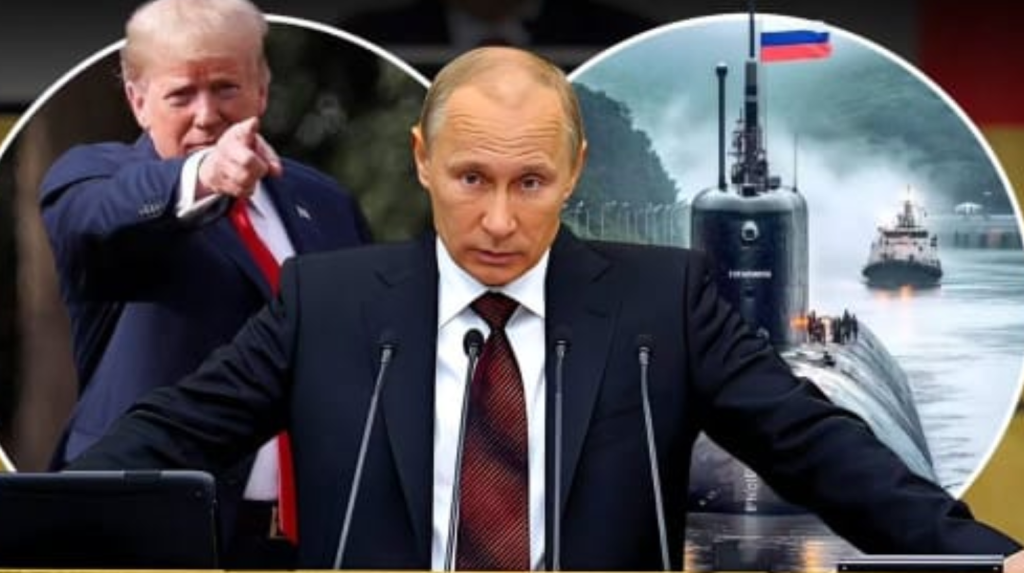
Tensions between the United States and Russia have intensified dramatically, sparking fears of a new global crisis. Russian President Vladimir Putin has officially ordered the deployment of Russia’s newly developed Oreshnik hypersonic missile systems, citing U.S. military provocations as the trigger. The move follows a direct order from U.S. President Donald Trump to position American nuclear-armed submarines closer to Russian borders—a decision that Moscow views as a serious escalation.
The diplomatic standoff has been building over several weeks, marked by confrontational exchanges and aggressive military posturing. Putin responded sharply to Trump’s submarine deployments, warning that Russia would answer any encroachment near its territory with immediate and powerful military action. That response now includes the active deployment of the Oreshnik missile system to strategic locations such as Belarus, dramatically increasing strike capabilities across Europe.
The Oreshnik missile is considered a major leap in weapons technology. A mobile, solid-fueled, intermediate-range hypersonic missile, it can reach speeds up to Mach 10 or 11, making it nearly impossible to intercept using current defense systems. Armed with either conventional or nuclear warheads—and equipped with MIRV (Multiple Independently Targetable Reentry Vehicle) technology—it has the capability to strike multiple high-value targets simultaneously across vast distances.
Russian officials confirmed the missile system is already in mass production and combat-ready. Its first known operational use was in Ukraine in late 2024, where it delivered devastating results even without a nuclear payload. Military analysts have compared its destructive capacity to a low-yield nuclear strike, highlighting the weapon’s potential to change the balance of power in any conflict.
The decision to station Oreshnik systems in Belarus is seen as a direct threat to NATO, placing major European capitals within minutes of a potential strike. It also reflects a significant shift in Russia’s nuclear doctrine, with Moscow signaling it may now consider using nuclear weapons in response not only to nuclear threats, but also to certain conventional military attacks.
These developments have triggered alarm across the international community. Security experts warn that the risk of accidental or miscalculated conflict has never been higher since the Cold War. With Russia lowering the threshold for nuclear response and the U.S. reinforcing its nuclear posture in Europe, any further provocation could have catastrophic consequences.
Global powers, including China and European Union states, are closely monitoring the situation. Some have initiated their own military readiness drills, while others have issued calls for restraint and diplomatic resolution. However, with both Moscow and Washington refusing to back down, the path toward de-escalation remains uncertain.
As the world watches this dangerous standoff unfold, questions grow about how close the superpowers are to the brink—and what it would take to pull them back.



